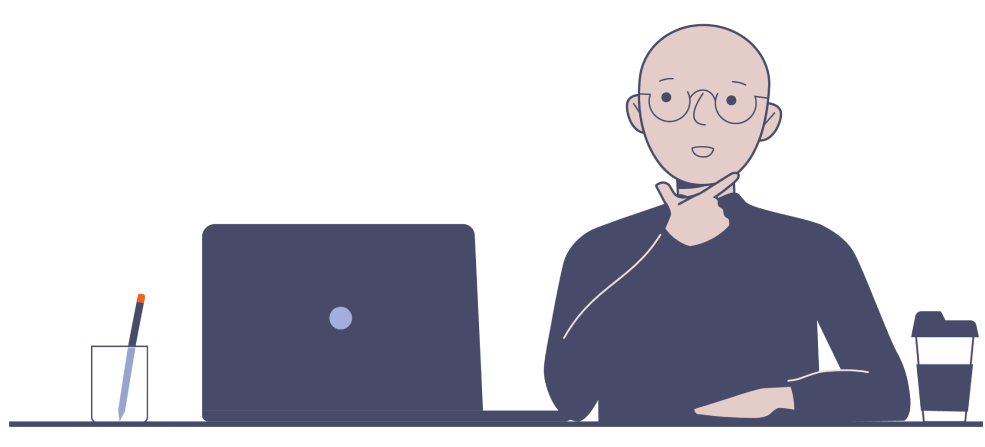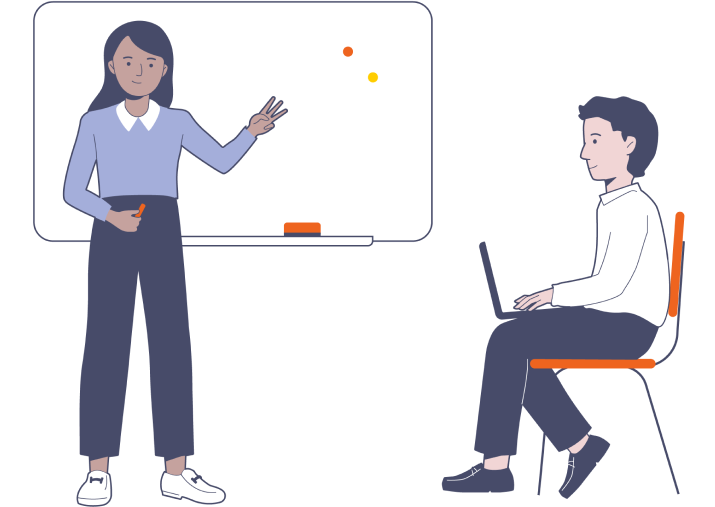
What's the difference between instructional coaching and responsive coaching?
Resources|8th May 2024

Co-Founder & CEO — Steplab
There are various conceptions of instructional coaching. The different terms used to describe instructional coaching models are often unhelpful, at times divisive, and can be a cause of confusion.
What do we mean by instructional coaching?
In an increasingly wide body of research evidence, there’s consensus that instructional coaching looks to be the most impactful way to ensure that teachers make regular, sustained progress (Sims, 2019). However, if we look deeper, we find that when people talk about instructional coaching, they can often mean different things. Unless we have complete clarity on what we mean when we talk about instructional coaching, it’s unlikely we’ll achieve success in its potential as a powerful professional development tool.
There are various conceptions of instructional coaching. The different terms used to describe instructional coaching models are often unhelpful, at times divisive, and can be a cause of confusion. They range from ‘Directive’ (Bambrick-Santoyo, 2016) - the coach is in charge of setting the direction of travel - at one end of the spectrum - to ‘Facilitative’ (Knight & van Niewerburgh, 2012) - all the information about how to improve must come from within the teacher. Somewhere between both of these lies ‘Dialogic’ coaching (Knight, 2018), where the coach can feel free to share strategies, but only after teachers themselves dictate the broader goals.
So, what’s the problem?
Each of these models has its own acronyms, jargon, rules, protocol and processes. Mastering a single approach is tough; learning to switch between approaches is unlikely to be possible for anyone working in a busy school.
It is, however, critical that coaches are able to use different approaches. More directive coaching works well with novice teachers - where they have gaps or errors in their knowledge (Clark & Elen, 2006; van Merriënboer et al., 2003; Persky & Robinson, 2017) - whereas when working with teachers with more advanced mental models, coaching can move towards the more facilitative, relying on the teacher’s own knowledge to do the heavy lifting (Klauer, 1985; van Merriënboer & Paas, 1998).
To restate this challenge more plainly: in order to find an approach that suits every teacher, it looks like we may be required to master more than one complex coaching model.
This challenge is exacerbated by the reality that teacher expertise is never uniform or simple - being an expert at teaching English to Year 9 does not automatically make one an expert at teaching Spanish to Year 7. Rather, expertise is multi-faceted, variable and complex (Berliner, 2004): I may be expert at teaching Macbeth to Year 9 with my current class, but struggle with a different set of students. I may be an expert at Macbeth, but a novice at teaching King Lear to Year 13.
What do we mean by responsive coaching?
To support every teacher to improve - no matter their experience and expertise - we must rely on a coaching approach that is simple, flexible and adaptable. Our coaching style must vary, depending on the mental models of the teacher we are working with. Responsive Coaching achieves just this because it has effective diagnosis at its heart: coaches ask diagnostic questions to understand teachers’ mental models. They select the most suitable coaching approach based on this diagnosis.
How does this work in practice?
We’ve argued that instead of ‘Directive’, ‘Facilitative’ or ‘Dialogic’ approaches, we need a single, clear Responsive Coaching approach. Coaches need to be able to flex their style, often more than once in a single feedback conversation, depending on a teachers’ mental models. But, how can we make this happen in reality?
Our Responsive Coaching approach is framed around five key elements. We refer to these as Change Catalysts - each must be present in order for a teacher to make successful, sustained changes to their practice:
The five catalysts combine - as elements in a circuit - to enable the current of successful teacher change to flow:

If any catalyst is missing when a teacher aims to improve, change is unlikely to take place because an essential element that drives improved teaching is missing.

When coaching within each catalyst, the following components drive Responsive Coaching:
- 1.Diagnostic questions explicitly designed to determine the strength of teacher mental models
- 2.Coaching strategies that coaches can deploy, depending on what they learn. Some of them ‘Tell’ to share information with teachers; some of them ‘Ask’ questions to guide and deepen teacher thinking; if a teacher has strong mental models in a catalyst, coaches don’t need to deploy any strategies at all - they can simply move to the next catalyst.

Coaches use this simple pattern to navigate feedback conversations, providing coaching that is perfectly suited to the teacher they are working with.
Importantly, coaches don’t need to stick rigidly to one approach in the course of a single conversation. They can adapt their approach mid-conversation, providing a truly adaptive, flexible and personalised approach to coaching.

To speak to one of our team about how responsive coaching can supercharge your school or trust, get in touch to book a Steplab demo. To find out more about responsive coaching, order your copy of Steplab founder & CEO Josh's book Responsive Coaching.
Happy coaching!
References
Bambrick-Santoyo, P., 2016. Get better faster: A 90-day plan for coaching new teachers. John Wiley & Sons.
Berliner, David. (2004). Expert Teachers: Their Characteristics, Development and Accomplishments.
Clark, R. E. & Elen, J. (2006) Handling Complexity in Learning Environments: Research and Theory. London: Elsevier.
Knight, J. van Nieuwerburgh, C (2012) Instructional coaching: a focus on practice, Coaching: An International Journal of Theory, Research and Practice, 5:2, 100-112,
Knight, Jim (2018). The Impact Cycle. Corwin
Klauer, K. J. (1985), Framework for a theory of teaching,Teaching and Teacher Education,Volume 1, Issue 1, 1985,Pages 5-17
Merrienboer, J. G. Paas, F. (1998) Educational Psychology Review · September 1998
Persky, A.M. and Robinson, J.D., 2017. Moving from novice to expertise and its implications for instruction. American journal of pharmaceutical education, 81 (9).
Sims, 2019 ‘Four reasons instructional coaching is currently the best-evidenced form of CPD’ Sam Sims Quantitative Education Research, Available at https://samsims.education/2019/02/19/247/ Accessed 24-04-24).
Van Merriënboer, J.J., Kirschner, P.A. and Kester, L., 2003. Taking the load off a learner's mind: Instructional design for complex learning. Educational psychologist, 38(1), pp.5-13.


